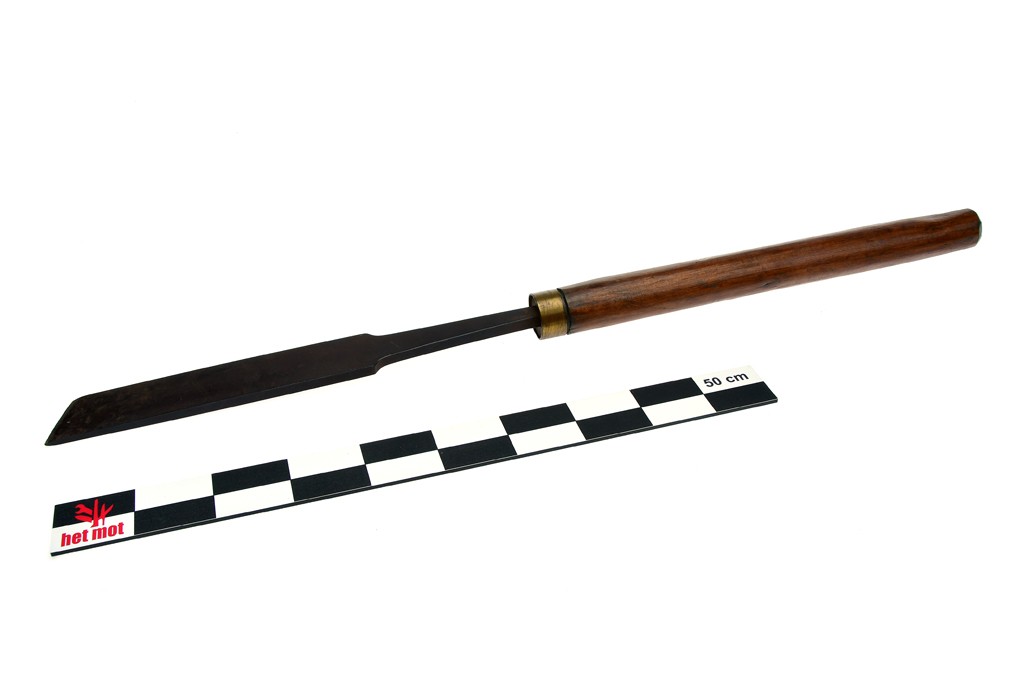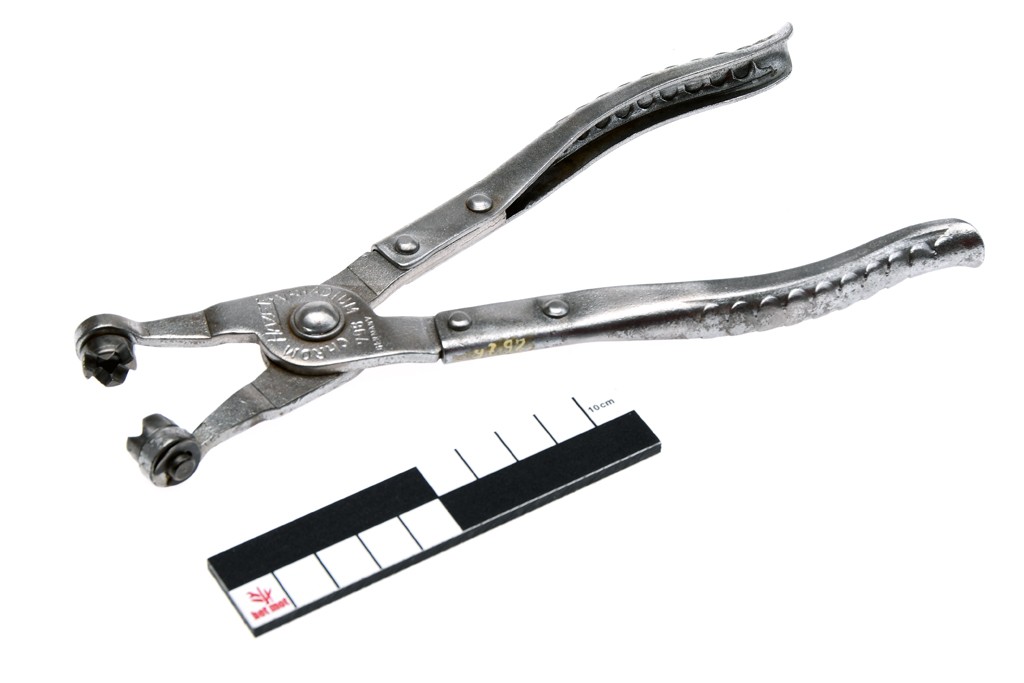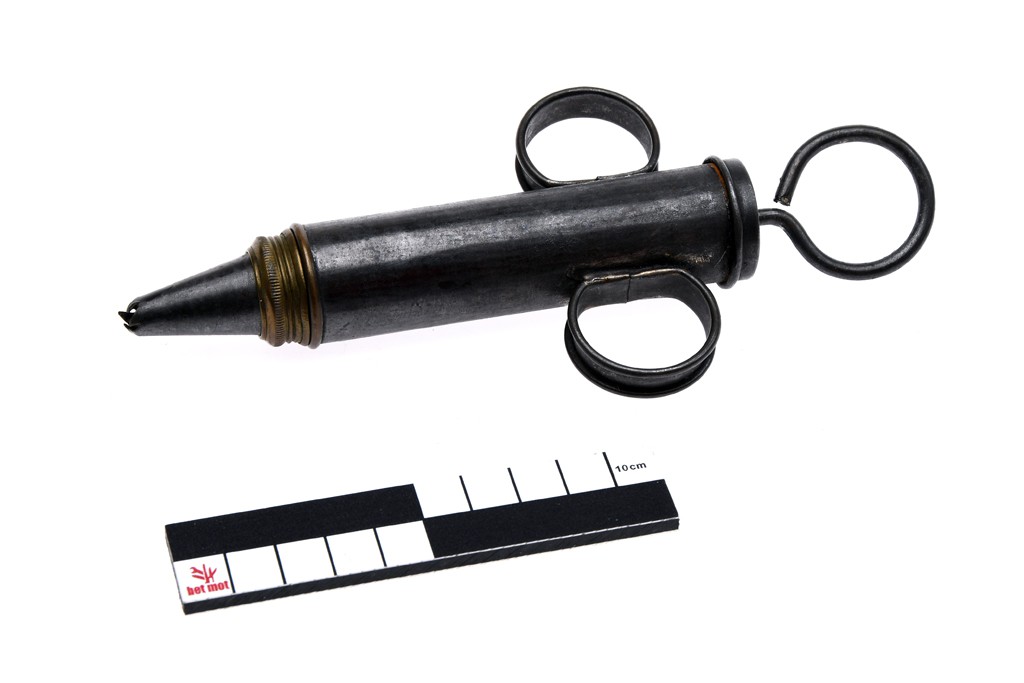ID-DOC: general search
Here you can enter a general keyword and perform a general search.
??? What are these question marks doing here? These represent tools which we know by a Dutch or French name, but who's English name is yet unknown. Suggestions are always welcome!
If you cannot find a certain tool, or if you experience other problems with this page, please let us know at info@mot.be.
Search for: tool
Showing search results 701 - 750
1,422 results found

Hook (butcher)
Hand tool (1) for hanging or removing objects. The butcher uses it for
bacon, sausages and the like, the steamer for clothes, the shopkeeper for
light and relatively little sold goods. The butcher's hook consists of an
upwardly bent hook (approx. 5 cm) with a socket in which a long stem
(approx. 120-250 cm) protrudes. Some models have several hooks. See also
the boathook. [MOT] (1) Proper name unknown.

Hook and side tool
This hook and side tool is one of the most commonly used chisels of the
turner and serves to smooth a piece on the lathe. [MOT]

Hook spanner
This text can only be consulted in Dutch
<https://www.mot.be/resource/Tool/hook-spanner?lang=nl>

Hook tool
This hook tool is a metal rod (approx. 20-30 cm) with one end protruding
into a handle, the other bent at right angles. That end is beveled.
Sometimes the rod is T-shaped so that there are two cuts. The woodturner
uses the hand tool on the lathe to hollow out a piece of wood sideways.
[MOT]

Hoop hook
This text can only be consulted in Dutch
<https://www.mot.be/resource/Tool/hoop-hook?lang=nl>

Hoop notching knife
This text can only be consulted in Dutch
<https://www.mot.be/resource/Tool/hoop-notching-knife?lang=nl>

Hoop-driver
This text can only be consulted in Dutch
<https://www.mot.be/resource/Tool/hoop-driver?lang=nl>

Hooping windlass
This text can only be consulted in Dutch
<https://www.mot.be/resource/Tool/hooping-windlass?lang=nl>

Hop reaping hook
The proper name of this hop reaping hook is yet unknown.For more technical
information about this tool, see the dutch version of this file. [MOT]

Hop scuppet
This text can only be consulted in Dutch
<https://www.mot.be/resource/Tool/hop-scuppet?lang=nl>

Horn file
The horn file (1) is used to work hard wood, horn, ivory or lead by
friction. It is a metal straight or curved rod (15-25 / 0.5-3 / 0.5 cm)
with deep parallel notches in the width, inserted into a short wooden
handle of about 15 cm (2). The tool can be distinguished from the rasp for
wood, which has points. [MOT] (1) Proper name unknown. Because the tool is
widely used to process horn, we propose this name. (2) See a special model
that resembles an iron in ROUBO: 3 pl. 328.

Horse dung hoe
This text can only be consulted in Dutch
<https://www.mot.be/resource/Tool/horse-dung-hoe?lang=nl>

Horse rasp
This text can only be consulted in Dutch
<https://www.mot.be/resource/Tool/horse-rasp?lang=nl>

Horse tooth chisel
This text can only be consulted in Dutch
<https://www.mot.be/resource/Tool/horse-tooth-chisel?lang=nl>

Horseman's folding knife
This text can only be consulted in Dutch
<https://www.mot.be/resource/Tool/horsemans-folding-knife?lang=nl>

Hose clamp pliers
This text can only be consulted in Dutch
<https://www.mot.be/resource/Tool/hose-clamp-pliers?lang=nl>

Humane twitch
The humane twitch are metal or wooden pliers consisting of two levers,
which are connected to each other by means of a hinge, a ring or a rope.
The two arms are straight or bent. In the former case, the joint ensures
that there is space left when the tool is squeezed; so the lip is not
squashed. The double arc in the second case serves the same purpose. A rack
on one of the arms and a ring on the other make it possible to hold the
tool in a certain position; a rope attached to an arm fulfills the same
role. The humane twitch pinches the very sensitive upper lip (1) of a horse
during treatment to divert the animal's attention and to induce a calming
and sedative effect in case of disturbing (e.g. eye care) or painful
procedures (cf. nose twitch) (2). [MOT] (1) According to '' Antique medical
instruments '': 226 the tongue would be caught, but there seem to be no
other traces of that method. (2) From an animal welfare point of view, the
nose twitch seems to be preferred to the humane twitch,...

Hunting knife (folding)
This text can only be consulted in Dutch
<https://www.mot.be/resource/Tool/hunting-knife-folding?lang=nl>

Ice cream scoop
This text can only be consulted in Dutch
<https://www.mot.be/resource/Tool/ice-cream-scoop?lang=nl>

Ice crusher
This text can only be consulted in Dutch
<https://www.mot.be/resource/Tool/ice-crusher?lang=nl>

Ice cube tongs
This text can only be consulted in Dutch
<https://www.mot.be/resource/Tool/ice-cube-tongs?lang=nl>

Ice dagger
This text can only be consulted in Dutch
<https://www.mot.be/resource/Tool/ice-dagger?lang=nl>

Ice hook
Hand tool used to move the large blocks of ice that are used to keep food
and drinks cool. It has an L-shaped metal hook with a pointed and slightly
bent end, which is screwed to a relatively long (approx. 30-40 cm) wooden
handle. [MOT]

Ice pick
Awl (approx. 20 cm long) used to break large blocks of ice into pieces. The
awl is held at an angle of 45 ° and the tip is pushed into the ice to break
it. This is continued until flakes of the desired size are obtained. An ice
pick can also consist of six shorter awls (about 3 cm) next to each other
at some distance so that it has a fork-like shape (1). [MOT] (1) According
to BRIDGE & TIBBETTS: 55, this instrument would be used to sculpt ice.

Ice-axe
This text can only be consulted in Dutch
<https://www.mot.be/resource/Tool/ice-axe?lang=nl>

Icing syringe
This text can only be consulted in Dutch
<https://www.mot.be/resource/Tool/icing-syringe?lang=nl>

Incising knife
This text can only be consulted in Dutch
<https://www.mot.be/resource/Tool/incising-knife?lang=nl>

Increment borer
The age of a living tree can be determined with an increment borer. This
hand tool is mainly used by the forest ranger, the arborist and the
dendrochronologist. More technical information on the dutch version of this
page. [MOT]

Infantry scoop
Infantry scoop of the military. This text can only be consulted in Dutch.
[MOT]

Insinglass besom
Insinglass besom (1). The description is only available in dutch. [MOT] (1)
Proper name unkown.

Insulation knife
This text can only be consulted in Dutch
<https://www.mot.be/resource/Tool/insulation-knife?lang=nl>

Insulation pipe bender
This text can only be consulted in Dutch
<https://www.mot.be/resource/Tool/251?lang=nl>

Insulation pipe cutter
This text can only be consulted in Dutch
<https://www.mot.be/resource/Tool/318?lang=nl>

Iron (solid metal)
This text can only be consulted in Dutch
<https://www.mot.be/resource/Tool/646?lang=nl>

Jack plane
The Jack plane is a planer with a square, 50-60 cm long block, with handle,
without turning chisel. It is the first plane used to smooth a piece of
wood. Since it is intended for rough work, the edge of its chisel is
slightly rounded. Then the wood is processed with a jointer plane. [MOT]

Jar opener
This text can only be consulted in Dutch
<https://www.mot.be/resource/Tool/jar-opener?lang=nl>

Jar wrench
This text can only be consulted in Dutch
<https://www.mot.be/resource/Tool/jar-wrench?lang=nl>

Jewelers' hammer
The jeweler's hammer is a small (approx. 15-25 cm) and light (approx.
50-100 g) hammer. The head (approx. 7-10 cm) has one wedge-shaped end and
one circular or square (approx. 1 cm). The handle is made of wood. Another
model is all-metal with a short, round handle. The goldsmith uses this
hammer to perform very fine and precise work, such as embossing. [MOT]

Jigger
Read the article on continental jiggers of the carriage maker.

Joiner's hammer
This text can only be consulted in Dutch
<https://www.mot.be/resource/Tool/joiners-hammer?lang=nl>

Joiner's mallet
Wooden, rectangular hammer with short handle, usually made of beech or
vinegar. Sometimes the head may be slightly bowed. The carpenter uses this
hammer for various hammering or chiselling work, to close mortise and tenon
joints, etc.See also the joiner's hammer. [MOT]

Jointer plane
The jointer plane is a plane up to one meter long with a turning chisel, a
handle and sometimes a horn. It serves to plan perfectly smooth long pieces
already worked with the jack plane. Sometimes one or two cross poles are
attached on or in the block in order to be able to work in pairs: one
craftsman pushes, another pulls. Sometimes a rope is tied to the front
crossbar. Because this plane has to do fine work, the angle of the chisel
is quite large and the space for the cut is small. The latter is completely
straight, only the corners are rounded so as not to leave any traces. [MOT]

Key for cream seperator
This text can only be consulted in Dutch
<https://www.mot.be/resource/Tool/key-for-cream-seperator?lang=nl>

Key for roller skates
Small box spanner combined with two ring spanners or with a screwdriver,
with which the roller skater adjusts his skates to his shoes (1). Another
model consists of a small (approx. 12 cm) thin double ring spanner. [MOT]
(1) These are skates that are attached to the shoes by means of straps.

Key for safety fuse type DIAZED
More technical information on our dutch pages. See also these safety fuse
pliers. [MOT]

Key for soil auger
This text can only be consulted in Dutch
<https://www.mot.be/resource/Tool/key-for-soil-auger?lang=nl>

Kitchen scraper
This text can only be consulted in Dutch
<https://www.mot.be/resource/Tool/spatula-kitchen?lang=nl>

Knife (square paving-tile maker)
With this knife, the tile maker cuts off the excess clay around the tile
mould.The hand tool consists of a thin rectangular trapezoidal iron blade
with a cylindrical wooden handle at the top of the short side. The cut is
always longer than the mould.This knife is not used for cutting, but is
pushed diagonally forward and down along the side of the tile mould.
[EMABB]

Knife board
This text can only be consulted in Dutch
<https://www.mot.be/resource/Tool/knife-board?lang=nl>

Knife cleaner
This text can only be consulted in Dutch
<https://www.mot.be/resource/Tool/knife-cleaner?lang=nl>
